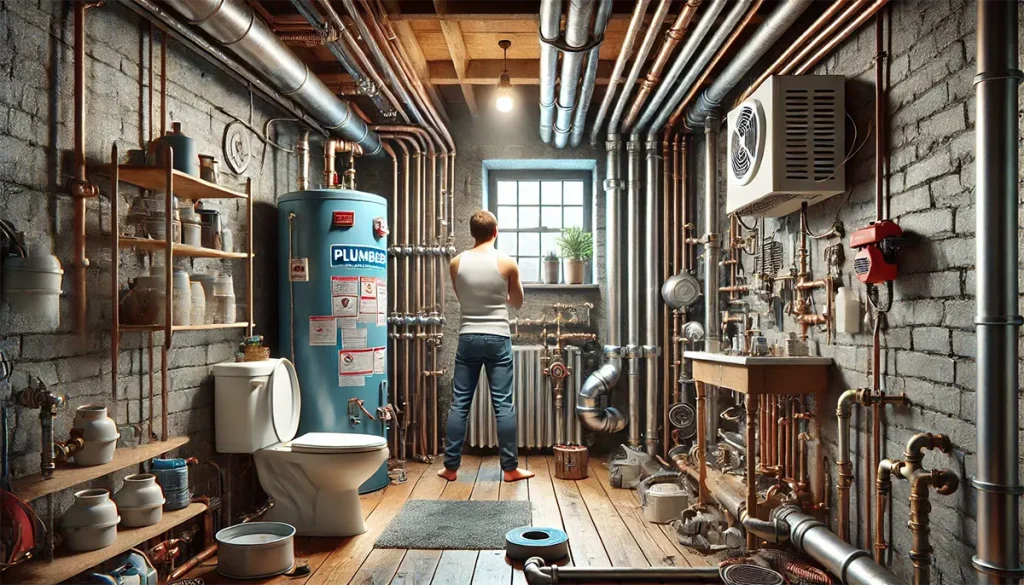The installation of gas lines and appliances requires meticulous attention to ventilation and clearance requirements. Failure to adhere to these critical specifications can result in severe safety hazards, compromised appliance performance, and potential legal ramifications. This section will elucidate the importance of proper ventilation and clearance, outline the potential risks associated with inadequate implementation, and provide comprehensive guidelines for ensuring compliance with safety standards.
Importance of Proper Ventilation
Adequate ventilation is paramount in gas line installations for several reasons:
- Combustion Air Supply
Gas appliances require a sufficient supply of oxygen for complete combustion. Inadequate ventilation can lead to incomplete combustion, resulting in the production of carbon monoxide, a highly toxic gas. - Exhaust Gas Removal
Proper ventilation ensures the efficient removal of combustion byproducts, preventing the accumulation of harmful gases within the living space. - Temperature Regulation
Effective ventilation helps maintain optimal operating temperatures for gas appliances, enhancing their efficiency and longevity. - Moisture Control
Adequate airflow mitigates moisture buildup, which can lead to corrosion of gas lines and appliance components.
Risks Associated with Inadequate Ventilation
The consequences of insufficient ventilation can be severe and potentially life-threatening:
- Carbon Monoxide Poisoning
Inadequate ventilation can result in the accumulation of carbon monoxide, leading to severe health risks or fatalities. - Fire Hazards
Poor ventilation can cause overheating of appliances and surrounding materials, increasing the risk of fire. - Appliance Malfunction
Insufficient air supply can lead to improper combustion, causing appliance inefficiency or failure. - Structural Damage
Excessive moisture accumulation due to poor ventilation can result in structural deterioration over time.
Clearance Requirements
Proper clearance around gas appliances and lines is essential for safety and optimal performance:
- Heat Dissipation
Adequate clearance allows for proper heat dissipation, preventing overheating of surrounding materials and structures. - Accessibility
Sufficient clearance ensures easy access for maintenance, repairs, and emergency shut-offs. - Fire Prevention
Maintaining proper distances from combustible materials reduces the risk of fire propagation. - Compliance with Regulations
Adhering to clearance requirements is often mandated by local building codes and manufacturer specifications.
Guidelines for Ensuring Proper Ventilation and Clearance
To mitigate the risks associated with inadequate ventilation and clearance, the following guidelines should be meticulously observed:
- Adhere to Manufacturer Specifications
Strictly follow the ventilation and clearance requirements outlined in the manufacturer’s installation instructions for each gas appliance. - Comply with Local Codes
Familiarize yourself with and adhere to local building codes and regulations pertaining to gas line installations and appliance placements. - Implement Proper Venting Systems
Install appropriate venting systems, such as flues or chimneys, to ensure efficient removal of combustion byproducts. - Ensure Adequate Air Supply
Calculate and provide the necessary air supply for complete combustion, considering the combined requirements of all gas appliances in the space. - Maintain Clearances
Observe minimum clearance distances from walls, ceilings, and combustible materials as specified by manufacturers and local codes. - Regular Inspections
Conduct periodic inspections of ventilation systems and clearances to ensure ongoing compliance and identify potential issues. - Professional Installation
Engage certified professionals for gas line installations and appliance placements to ensure adherence to all safety standards. - Implement Carbon Monoxide Detectors
Install and maintain carbon monoxide detectors in accordance with local regulations to provide an additional layer of safety. - Education and Awareness
Educate occupants about the importance of maintaining proper ventilation and clearances, and the signs of potential ventilation issues.
Conclusion
The significance of adequate ventilation and clearance in gas line installations cannot be overstated. Proper implementation is crucial for ensuring the safety of occupants, the efficient operation of gas appliances, and compliance with legal requirements. By adhering to manufacturer specifications, local codes, and best practices, the risks associated with inadequate ventilation and clearance can be effectively mitigated. Regular maintenance and inspections further contribute to the ongoing safety and efficiency of gas installations.
It is imperative that all stakeholders involved in gas line installations, from homeowners to professional installers, prioritize these critical aspects of safety. The potential consequences of neglecting proper ventilation and clearance far outweigh any perceived convenience or cost savings. By maintaining a steadfast commitment to these safety measures, we can ensure the safe and efficient use of gas appliances while protecting the well-being of building occupants.



